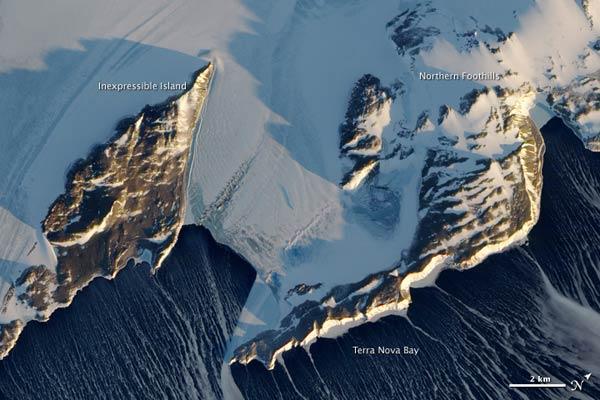Antarctica's Fierce Winds Shape Snow and Ice


At the beginning of the Southern Hemisphere's spring (fall in the Northern Hemisphere), the sun emerges above the horizon after the long, dark winter.
In this image, taken in September 2009 by NASA's Earth Observing-1 satellite, Antarctica's Inexpressible Island and the Northern Foothills Mountains were illuminated by a glimmer of sunlight from a low angle. The seaward slopes of the mountains are gleaming white, and they cast long shadows inland over the Nansen Ice Sheet. Terra Nova Bay appears in shadow.
The scene provides at least two indications of the bay's persistent and fierce katabatic winds downslope winds that blow from the interior of the ice sheet toward the coast.
One is the windswept ground in the mountainous terrain. In many places, there is a pattern of bare rock and snow drifts that suggests the winds have scoured snow from upwind (inland-facing) slopes and deposited it on the lee sides.
The second sign of the strong winds appears in the open waters of Terra Nova Bay. Parallel white streamers are composed of newly formed sea ice, probably frazil crystals just millimeters wide and congealed frazil, called "grease ice" because it resembles an oil slick on the water. The ice is continually pushed out to sea by the strong offshore winds, leaving a pocket of open water, a polynya.
The winds are responsible for making this location an ideal spot for ((CONLINK|29676|AdÃ
Get the world’s most fascinating discoveries delivered straight to your inbox.



